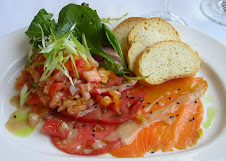
Some fast-food restaurants such as Dairy Queen serve milkshakes which are prepared by blending soft-serve ice cream ice milk with sweetened, flavored syrups such as chocolate syrup and fruit-flavored syrup and milk. While these milkshakes are hand-blended, the make use of soft-serve ice cream marks these beverages as fast-food products. Soft serve ice cream is a frozen dessert that is dispensed from a machine. It was invented by a chemical research team in Britain that discovered a method of doubling the amount of air in ice cream, allowing manufacturers to use a lesser number of ingredients, reducing costs.































